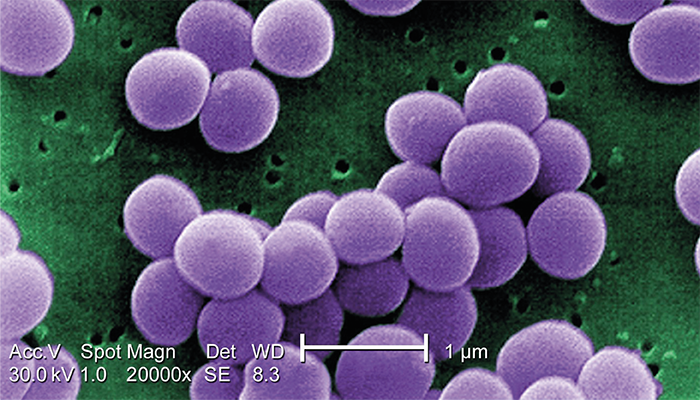
Researchers have unveiled the mutational landscape of Staphylococcus aureus (S. aureus) during human colonization in a study published in Nature Communications. This research highlights key genetic changes that help the bacterium survive and thrive in the human body, offering insights that could improve diagnostics.
Analyzing 3060 S. aureus genomes from 791 individuals, the team identified significant mutational enrichment in genes related to metabolism, quorum sensing, and antibiotic resistance. Despite limited genetic diversity among isolates from the same host, critical mutations were noted in metabolic genes, including nasD (assimilatory nitrite reductase) and ureG (urease accessory protein), as well as quorum-sensing regulators agrA and agrC. These mutations were validated in vitro, demonstrating their impact on nitrogen metabolism, haemolytic activity, and antibiotic susceptibility.
The team used genome-wide mutation analysis on isolates from nasal and skin colonization sites. Most samples came from healthcare settings in the UK, with additional data from Singapore, Thailand, and Ireland. Despite low genetic diversity within individual hosts, mutations in key genes indicated adaptive changes.
“These mutations can be used as diagnostic markers, as well as to design new therapeutic strategies and a more rational and effective use of antibiotics,” said first author Francesc Coll in the press release. “Studies of bacterial adaptation like this could also reveal mechanisms of immune evasion – how bacteria adapt to evade recognition and attack by our immune system. This could help identify new antigens, components of the bacteria that the immune system recognizes as foreign or dangerous.”




